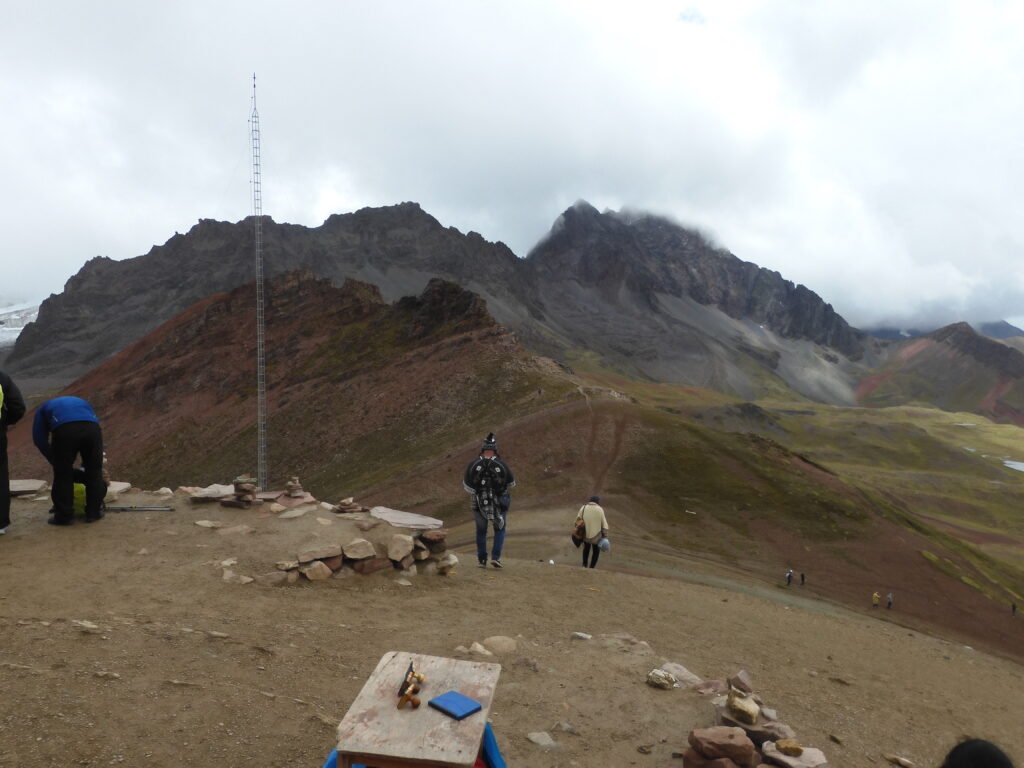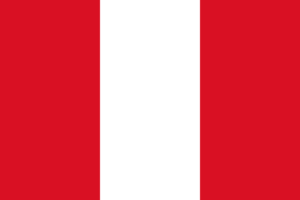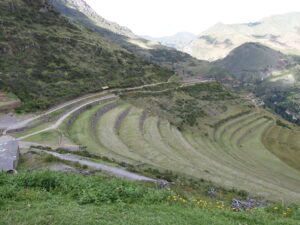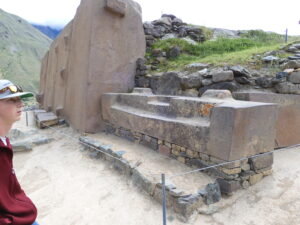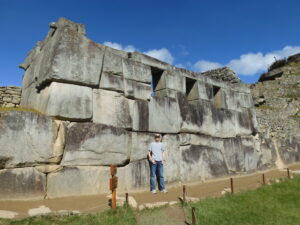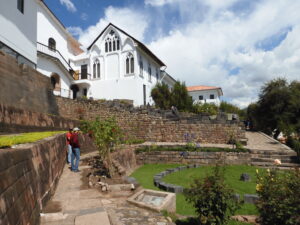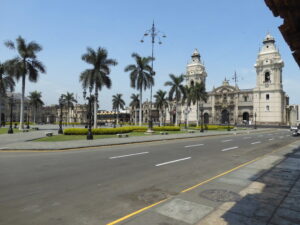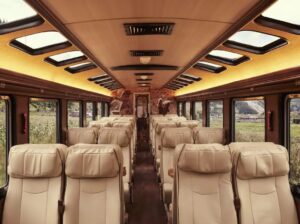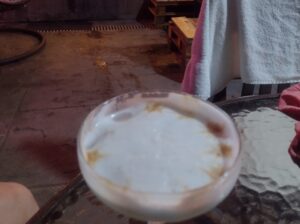Vinicunca
The Rainbow Mountain
Just about everybody I knew who had gone to Peru said that the Rainbow Mountain – otherwise known as Montaña de Colores, or the Quechua name Vinicunca – was one of the highlights of their visit. Vinicunca was covered by a glacier until about 2009 when it receded to reveal a striped pattern of seven different distinct and vivid colors formed by the mineralogy of the newly exposed rocks and soils. Tourism has been growing since 2010, and now it is one of the most well-known destinations in the greater Cusco area. One dissenting youtube travel blogger couple said they did not go, because they had heard that all of the photos you see posted online were heavily filtered. The preponderance of the testimony supported Vinicunca as a must see, so I did some research on how to visit the site. It takes some effort to get to the trail head. The starting point is a 3 ½ hour car or bus ride from Cusco, much of which is on unpaved roads. Once you arrive at the trail head, you have a hike to make that culminates in summiting a mountain at about 16,600’ above sea level.
We were unsure of how to advise my dad on participation in this day’s activity. He would have liked to have gone, but was concerned that the effort would be more than he could handle. I was more worried about how his 6’8” less-than-malleable frame would handle two three and a half hour rides in Peru-sided vehicles. I knew that horses and quads would be available for the better part of the hike, if he needed them. In the end, he opted to Uber around Cusco to museums while Preston, Andrew, and I took what we all knew would be a very long day trip.
Nearly everyone we met on the hike to the Montaña de Colores had booked a guided group tour. As you probably know by now, that is not my style. Despite a few challenges, going it on our own to Vinicunca turned out to be the most fortunate decision of the entire trip. But first, the challenges. By this point in our trip, we had a couple of brothers who we trusted to drive us on our longer trips. My Spanish was good enough to communicate more complicated requests about where we wanted to go and how we wanted to visit sites, and they were patient enough to understand what our goals were and did not try to push us into stops or purchases against our will. Although these brothers had business cards and purported tour guides, I don’t think Raul had been to Vinicunca – at least not recently.
Originally, Raul proposed meeting at 8:00. All the other accounts I had read of people making this trip had set off well before first light. I asked him if he wouldn’t mind meeting earlier. He suggested 7:00, to which I agreed. My driver and his brother were a part of some informal network of drivers and informal tour guides who shared information and felt free to contact one another for advice. After conferring with this driver’s guild, Raul called me back and said we should leave by least by 6:00. I once again readily agreed, having suspected this would be the best plan all along. I learned that there were two trail heads by which one could embark on the Vinicunca hike, one that required a longer drive and a shorter hike, and the other which was a shorter drive but left more walking. The driver’s information network had apparently also suggested that the road to one of these two trail heads had been blocked by a local groups fighting over a “tax” they collected to access the site. Several times as we sought the place to turn off of the paved highway and take dirt roads up to the trail head, Raul called back and spoke some rapid Spanish to someone in the driver’s guild.
We drove through the village of Pitumarca and emerged on the other side over gravel roads through some canyons, then through pastures surrounded by unforested hills. We passed a some children walking along the road, a long way from anything that looked like civilization.
“Where are these children walking?” I asked in Spanish.
“Just walking to school,” Raul replied.
Only I didn’t see a school. Eventually we passed one – about ten kilometers (over six miles) beyond where we had passed the children. Further down the road, we came to the tax collection point, which was nothing more than a couple of obstacles placed in the road with a hastily constructed booth alongside. It reminded me of the toll booth constructed by the townspeople of Rock Ridge in Blazing Saddles. (image) We paid our fee of a few soles, and continued.
Gradually, we climbed into country surrounded by the kinds of rocky jagged peaks we expected. By then, clouds were beginning to form around the highest terrain. Chances of rain had been forecast. It was the tail end of the rainy season, after all. But in this high country, who could predict the weather? Mountain storms often come and go. It would have been difficult to find a day for this trip when there was no chance at all of rain in the forecast. By the time we arrived at the parking lot, the surrounding peaks were obscured by clouds. We did have a hike, though, so perhaps it would be clearer where we arrived, or maybe as the day wore on, the clouds would burn off.
Even at this location, as we reached the parking lot at the trail head, we were greeted by a host of vendors. We were not the first to arrive, but we were ahead of the main crowds. Preston went to use the bathroom before we began walking. After some time, he returned with a puzzled look.
“What’s wrong, Preston?” I asked.
“They charged me for the toilet paper,” Preston answered.
Most small items are pretty inexpensive in Peru, but Preston is notoriously frugal. Seeing that he was mildly irritated by this transaction, and also curious to know how it played out, I continued, “Well how much did it cost?”
“Two soles,” Preston returned, “but I didn’t use it all. I still have half, in case I need it when we get back.”
“At least they had paper,” I replied. Nearly every toilet we encountered in Peru had no available paper and was missing the seat donut.
Raul looked a little tired. I did not feel like I needed a guide to follow a trail, so before we went to the bathroom, I offered him the opportunity to stay behind and rest in the car. He initially demurred, but upon our return, he asked in Spanish if we really didn’t mind if he waited in the car. He had been out driving people around until midnight. I told him that would not be a problem at all, and that we were just happy to have had a ride.
We set out on our hike. The first mile featured only a gradual incline, but the altitude was noticeable. We had been at nearly 12,000’ for several days by this point, so we were acclimated. I was also in very good physical condition, at least for a 51 year old man. I felt a strange sensation of having a more powerful pulse, but I never felt exhausted from the hike. A group of young ladies stopped after just a couple hundred yards to hire a horse. I guess all of that is to say that although we did not find the hike particularly taxing, a lot of people apparently do. Your mileage may vary. I tracked the distance on a Strava, and the distance from the trail head to the summit was only about 1 1/3 miles, just over 2km. The only significant ascent happens over the final 400 yards. The horses are not allowed over this stretch, so you have to climb that segment either way. The trail is never precarious nor insanely steep, but there is a solid climb over the final ¼ mile. It seems to me that even folks in average or below physical condition could traverse 400 yards by taking intermittent rests. This hike was far less taxing than climbing Guadalupe Peak on the Texas-New Mexico border or Wheeler Peak at Great Basin National Park in Nevada.
The final ascent is divided into two segments. After about 200 yards, we arrived at a saddle, which is the closest point to the colored part of the mountain. There are more vendors here. The site we had come so far to see was completely obscured at this point. I bought a plate of some kind of fried alpaca bits, which was surprisingly tasty. I visited with some other tourists here. Many of them were leaving without having seen the mountain at the behest of their tour guides who were insisting on heading back in case might begin to rain. The trail after the saddle turns 90 degrees and heads away from the rainbow mountain so tourists can get something closer to a bird’s eye view of the main attraction. We debated amongst ourselves whether it would be better to wait at the saddle. We were closer there to the colors. If we did get a break in the clouds, though, we would want to be where the best views were. I told the boys that in the end, I was going to climb to the peak one way or the other. So Preston, Andrew, and I made our way up the final 200 yards. All we could see from there was the elevation sign marking the top of the mountain. It offered proof we had reached the peak, but it seemed disappointing compared to the colors we were expecting. (Continued)

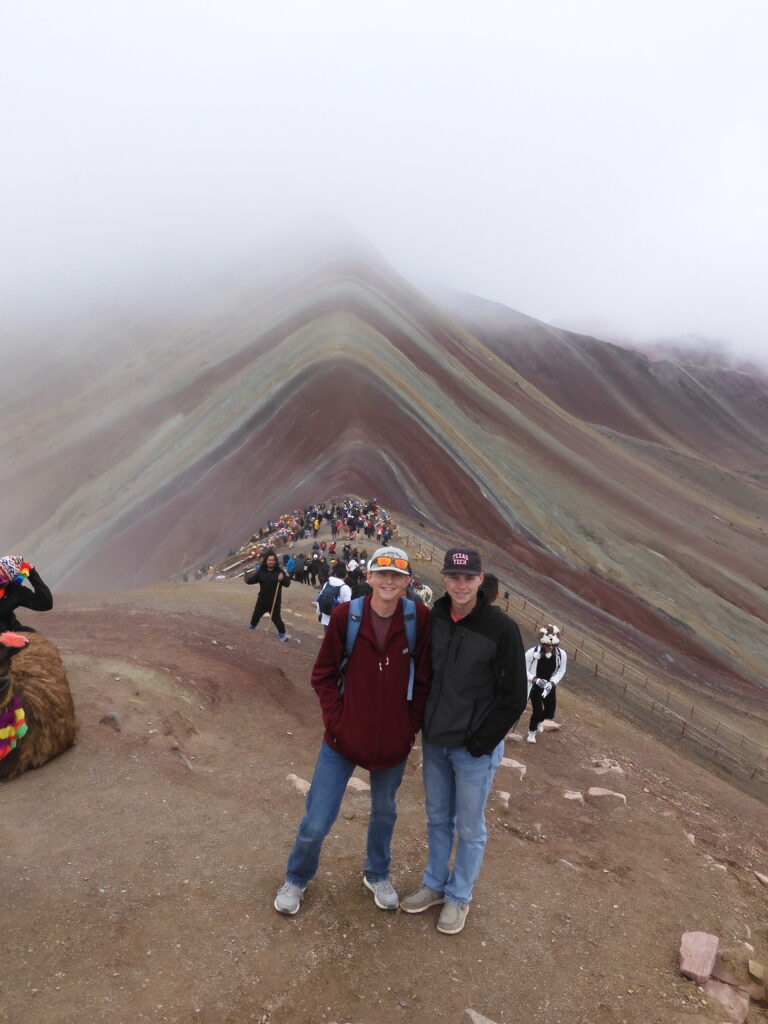


We waited for a half an hour or so at the peak, trading stories with other hikers. We met people visitors from St. Petersburg, Russia, the The Netherlands, France, and other parts of the United States. Little by little they were being herded back to their respective tour busses and forced to leave without seeing what they had paid their hefty tour prices to see.
Daniel from the Netherlands muttered, “I guess we have to leave now, our tour guide says we have to drive back down the hill in case it starts raining.”
“That’s one of the reasons I like to do as many of these outings as I can without guides,” I suggested.
Daniel, completely serious, responded, “Our tour company told us someone had died of exposure last month making this hike alone when a storm came up. I just wasn’t willing to take that kind of risk.” He sauntered back down the mountain toward the bus with his party.
There were literally hundreds of tourists on the same trail that day. It seems near impossible to do the hike in such isolation that you would become lost and die of exposure on a trail less than a mile and a half long. The company selling the tours and guides had convinced this poor fellow that attempting to summit Vinicunca without their services was something akin to taking on Everest without a Sherpa. Psychology plays a much bigger role in travel that most people think. How often do potential travelers opt out of a great experience for fear of the unknown? How often are travelers scared into buying products or services they don’t really need by vendors convincing them of the necessity? Far too many, unfortunately. In this case, the service was sold, but the experience never attained because a pushy driver wanted to get back to town a little sooner.
Having at least made it to the peak and still seen nothing but clouds, as sign, and some fellow travelers, the boys and I decided our best bet to get any view of the mountain’s colors would likely be at the saddle where the barrier of clouds between observer and mountain was at least thinner. We walked back down and waited another half an hour, chatting with more tour groups whose drivers had been brave enough to make the trip, but suddenly worried about getting home because the clouds might portend a little rain. All of a sudden, a puff of wind momentarily blew the clouds back, and we got a glimpse. I queue immediately formed in front of the designated selfie station. The wind made the wait a bit less comfortable. I had long since put my jacket back on. It did also give us intermittent partial views of what we had come so far to see.
As it became apparent that these viewing opportunities might continue, I told the boys I was going back up to the peak. They followed and sure enough, we began to see partial views of the colorful mountainside from the better lofty viewing point as well. Eventually, the clouds lifted and cleared enough for us to see the full ridge in all of its glory and even the more distant peaks. It is true that many of the photos you see of the Montaña de Colores are heavily doctored to show bright non-natural colors. I don’t know why people do that. The varied pastels of the mountain are distinct in a natural way that surpasses anything that could be edited with software. Perhaps psychology also impacts my enjoyment of travel. I tend to measure experience at an attraction by comparing my interpretation of that attraction to my expectations. Fortunately, my expectations tend to be exceeded more often than not. The Youtubers who planted skepticism in my mind about the grandeur of Vinicunca did me a great favor by lowering my expectations. We stayed near the peak for another hour and savored the views. The conversations shared with fellow visitors who were fortunate enough to have their drivers arrive when the mountain was actually visible were just icing on the cake.
Time and again, I find myself feeling rewarded for being a relatively independent traveler. This usually requires more research. It is usually more work. Occasionally, it results in inconvenient mistakes. Often, it leads to unpredictable experiences that are part of what I enjoy most about travel. But never so far in my travels have I been more thankful not to have been a part of a tour group than I was on this day, when my freedom to spend the time I needed at the top of the mountain in order to experience it was unimpeded by a schedule or a handler. (Continued)
